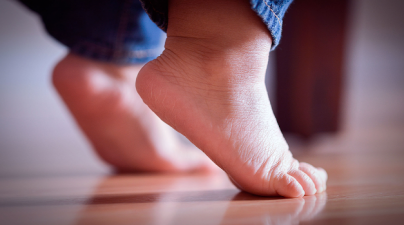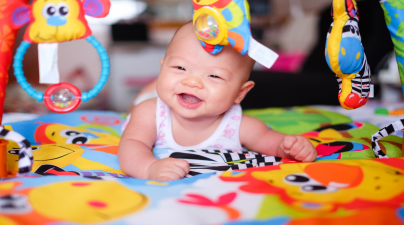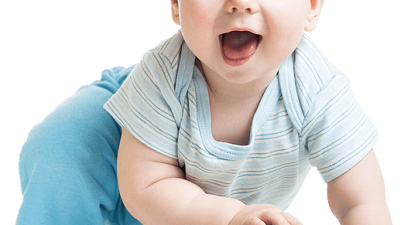-
27 August 2014
-
0 comments

When my daughter was a baby she was diagnosed with torticollis. Although this may seem scary when you first hear this diagnosis, therapy is usually effective and relatively short, often depending on how early the torticollis is diagnosed.
What is torticollis?
Torticollis is a condition where one’s neck is turned consistently to one side, with the chin rotated to the opposite shoulder. This is often caused by tightness in the neck muscle (sternocleidomastoid) that causes one to prefer one side of the body over the other. Congenital muscular torticollis (CMT) presents itself at birth or in infancy and is often the cause of plagiocephaly, where the back or one side of the infant’s head is flattened due to the persistent pressure applied from laying in one direction all the time.
How will torticollis affect my baby’s functioning?
Babies learn from exploring their environment and processing all the stimuli surrounding them. Torticollis greatly limits a baby’s function by restricting movement, thereby impacting vision, feeding and sensory processing, as well as fine and gross motor skills. Some clinical symptoms may include difficulty reaching for objects on affected side, limited visual tracking, rolling onto one side only, delayed sitting, poor head control, poor balance, asymmetrical crawling, difficulty feeding and aversion to movement in space (e.g., swinging).
What should I do if I notice symptoms of torticollis?
- Ask your doctor whether your concerns are indicative of torticollis. If so, your doctor will most likely recommend a physical therapy evaluation. Torticollis is often easily treated with physical therapy and regular stretching exercises at home. A physical therapist can teach you how to perform effective stretching exercises safely on your baby.
- Facilitate “tummy time.” Tummy time is crucial for young babies to develop strong core and neck muscles and enable them to explore their surroundings. It is especially important in infants with torticollis to prevent further plagiocephaly.
- Carry your baby. When babies are not engaging in tummy time, they are often positioned in car seats, swings, bouncers or strollers. These objects, while necessary at appropriate times, are not recommended for prolonged use due to the pressure placed on the head.
- Position your child’s crib so that your child has to turn his head toward affected side to see the room.
- Encourage your child to turn his head toward affected side during playtime. Use objects of interest to encourage your baby to look in both directions. A physical therapist can also teach you techniques to help encourage your infant to actively turn his head to the non-preferred side.
- When feeding, ensure that your baby feeds while lying on both sides, encouraging symmetry.
- Foster use of both sides of his body during playtime. When your child is on his back or in a supported, seated position, place toys slightly out of reach, in the middle of his body, to encourage the child to reach with both hands and kick with feet to retrieve object. This will work to strengthen the child’s core muscles and increase his bilateral integration skills.
Additional information
A small percentage of infants diagnosed with CMT also suffer from developmental dysplasia of the hip (DDH). The relationship between these two disorders is not widely recognized. If your child is diagnosed with CMT, request that the physical therapist examine his hips as well to determine if DDH is a concern.
Share Social




